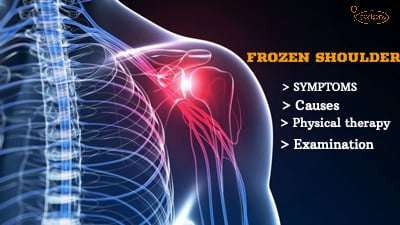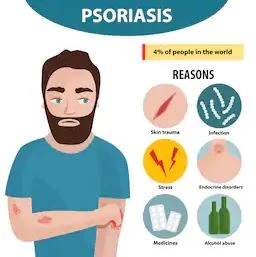Frozen shoulder, medically named adhesive capsulitis, is a shoulder condition that is mainly known for causing a severe loss of range of motion in the shoulder. Along with severe stiffness of the shoulder and significant loss of movement, this condition can be terribly painful and lead to a loss of function.
This condition may significantly impair your ability to perform day-to-day tasks due to the joint pain and lack of freedom of motion experienced when trying to move the arm. While what causes a shoulder to freeze is unknown, several known risk factors are correlated with this condition.
This blog post discusses the anatomy of the frozen shoulder, known risk factors and current treatment methods available.
Anatomy of a frozen shoulder
The shoulder joint is a ball and socket joint that is known as a synovial joint. A synovial joint is contained within a capsule consisting of a thick, fibrous layer of connective tissue that acts as a protective bubble, enveloping the joint. Inside of this fibrous sleeve of the capsule consists of a synovial membrane that lines the inner surface of the capsule. This membrane contains synovial fluid that aids with lubrication and nourishment of a healthy joint, allowing for smooth movement.
The shoulder joint has the greatest range of motion of any joint in the body. It raises the arm, rotates it and can go behind and in front of the body. No other joint has a greater degree of freedom compared to the shoulder. Because of this great allowance of range of motion, the shoulder joint is more vulnerable to injury than other joints. An injury to the shoulder will almost always damage the capsule in some way. In addition to injury, aging and other disease conditions may also damage the capsule’s integrity.
The capsule of the shoulder joint has many folds on the underside of the joint. Imagine an accordion. When the accordion is made smaller, its many folds all come close together. This is how the shoulder capsule acts when the arm is down at your side.
When made larger, those folds stretch out and the accordion lengthens. This is similar to what the capsule does when your arm is raised. In a completely healthy individual, those folds generally have no problem continuously folding and unfolding many times every day. In the case of adhesive capsulitis, those folds on the underside of the capsule become sticky due to inflammation and adhere to one another. This prevents the free movement of your arm when attempting to raise it up or out to the side.
The medical name, Adhesive Capsulitis, is very descriptive of the frozen shoulder condition. Few medical diagnoses are so aptly named. Adhesive – the folds of the capsule adhere to one another. Capsulitis names the actual structure that is the problem, the capsule. The capsule becomes inflamed (itis, suffix meaning ‘inflammation of‘) and the folds of the capsule adhere to one another.
Stages of frozen shoulder
This condition has a natural progression that generally occurs in patients with adhesive capsulitis. If you are diagnosed with a frozen shoulder, your specific timeline of this condition may differ. But in general, a frozen shoulder will progress similarly to the stages and timeline below.
Stage 1: Freezing
This is the initial period of time that you may notice the beginning of a loss of range of motion in the shoulder joint. However, pain is the dominating symptom of this stage. Your arm will become progressively stiffer and more difficult to move. The joint pain may worsen in the evening. Pain in the shoulder is usually more noticeable than the loss of motion in this stage which generally lasts from six weeks to nine months.
Stage 2: Frozen
The frozen stage of adhesive capsulitis consists of the period of time that the negative effects of a range of motion loss are at their peak. Pain may diminish slightly in stage, but the stiffness in the shoulder joint will be more prominent. This stage typically lasts around two to six months.
Stage 3: Thawing
This is when the shoulder begins to get better. It is the recovery stage. Without treatment, the symptoms of a frozen shoulder will typically resolve on their own after a period of time (a very long time). After a few years, you will most likely get your full range of motion back. But again, this can take years. Both the pain and range of motion will begin to improve during this stage. The thawing stage is generally thought to last from six months to two years.
What causes frozen shoulder?
When a diagnosis of adhesive capsulitis is made, the exact cause of why the shoulder has frozen is often hard to pinpoint. There is no correlation between hand dominance or the type of work that someone performs.
One scenario that puts you at risk of developing a frozen shoulder is a recent surgery on the shoulder. Other conditions such as recent trauma to the joint that requires prolonged immobility of the shoulder joint for a time may lead to freezing of the shoulder.
Your age and gender also may play a role. This condition is more frequently diagnosed in females that are over 40 years of age.
A diagnosis of diabetes has a well-known high correlation rate of an individual developing this condition. The progression of the condition is usually more severe when a diagnosis of diabetes is present. Other medical conditions are known to be correlated with adhesive capsulitis as well, including stroke, hypothyroidism, hyperthyroidism, cardiac disease and Parkinson’s disease.
What are the symptoms of a frozen shoulder?
Significant joint pain and loss of range of motion are the hallmark symptoms that arise as a result of a frozen shoulder.
These symptoms may get worse over time and generally will resolve on their own after going through each of the three stages of freezing, frozen and thawing. The joint pain generally goes away first. However, once the pain has gone, you may still be lacking quite a bit of range of motion of the shoulder joint. This will, in turn, negatively affect your ability to perform activities of daily living, such as dressing, brushing/washing your hair, bathing, etc.
How is a frozen shoulder treated?
Currently, the main treatment method for a diagnosis of frozen shoulder is a course of physical therapy. In PT, you will be educated on specific stretching and strengthening exercises that are geared towards getting your freedom of movement back in the shoulder. A disadvantageous course of action would be to not move the arm because it hurts. It needs to move around and not doing so may make the condition worse. It is very important to follow the advice of your doctor and therapist regarding the movement of the arm.
In physical therapy, you may also be treated with electrical stimulation methods on the shoulder that are helpful in reducing pain and inflammation.
Other treatments that may be suggested by your doctor are:
- NSAIDs (non-steroidal anti-inflammatory drugs)
- Other, stronger painkillers such as codeine
- Oral steroid pills or steroid injections in the shoulder joint
- Hot and or cold packs may help to relieve the pain. You may like the relief you get from one more than the other or alternating between hot and cold may help. Try the method that you think will work best for you.
There are instances when surgery on the shoulder will be recommended when the above conservative measures are not helpful to the degree that you are satisfied with. Surgical intervention for a frozen shoulder is called manipulation under anesthesia. This procedure gently moves the shoulder joint while you are under general anesthesia in an attempt to break up scar tissue and increase the range of motion.
How stem cell therapy can help
Stem cell therapy is a form of regenerative medicine that can help speed up the process of recovery from a frozen shoulder and may prevent the need for painful and costly surgery. Regenerative treatment with stem cells promotes the healing of the tissues and is not a case of putting a band-aid over the problem, such as with painkillers. There is no surgery or downtime required with this non-invasive treatment method.
Stem cells encourage healing by using the intrinsic properties of regenerative cells. Stem cells are injected directly into the shoulder joint, stimulate healing and have an anti-inflammatory effect.
Stem cell therapy from BioXellerator
We specialize in stem cell therapy. Our goal is to reduce pain, increase function and return you to normal life as quickly as possible. If you would like to avoid surgery and speed healing of your frozen shoulder, stem cell therapy may be the intervention that you are looking for.
Speak to a patient advocate about your frozen shoulder by calling 1.888.567.2469


